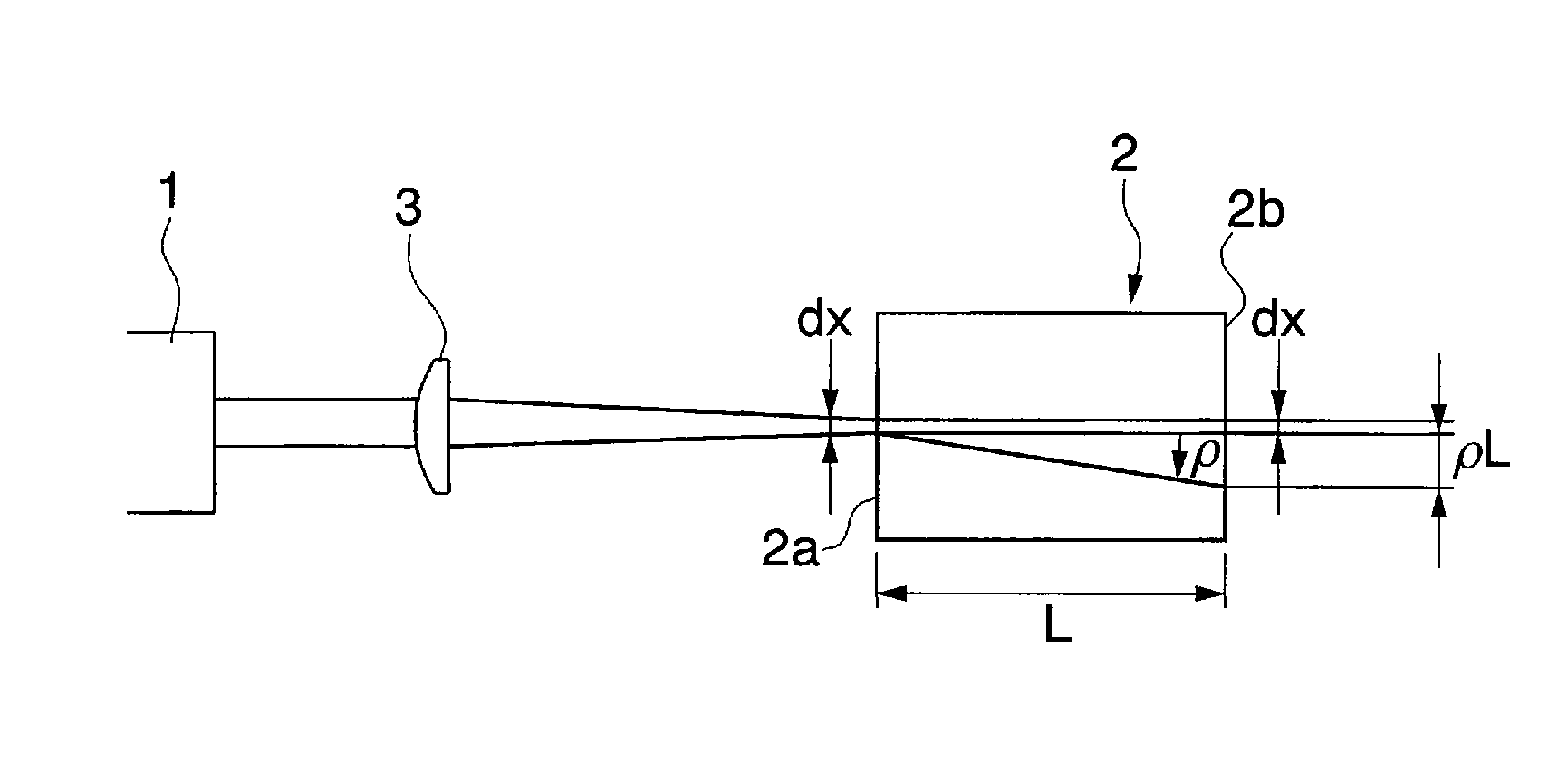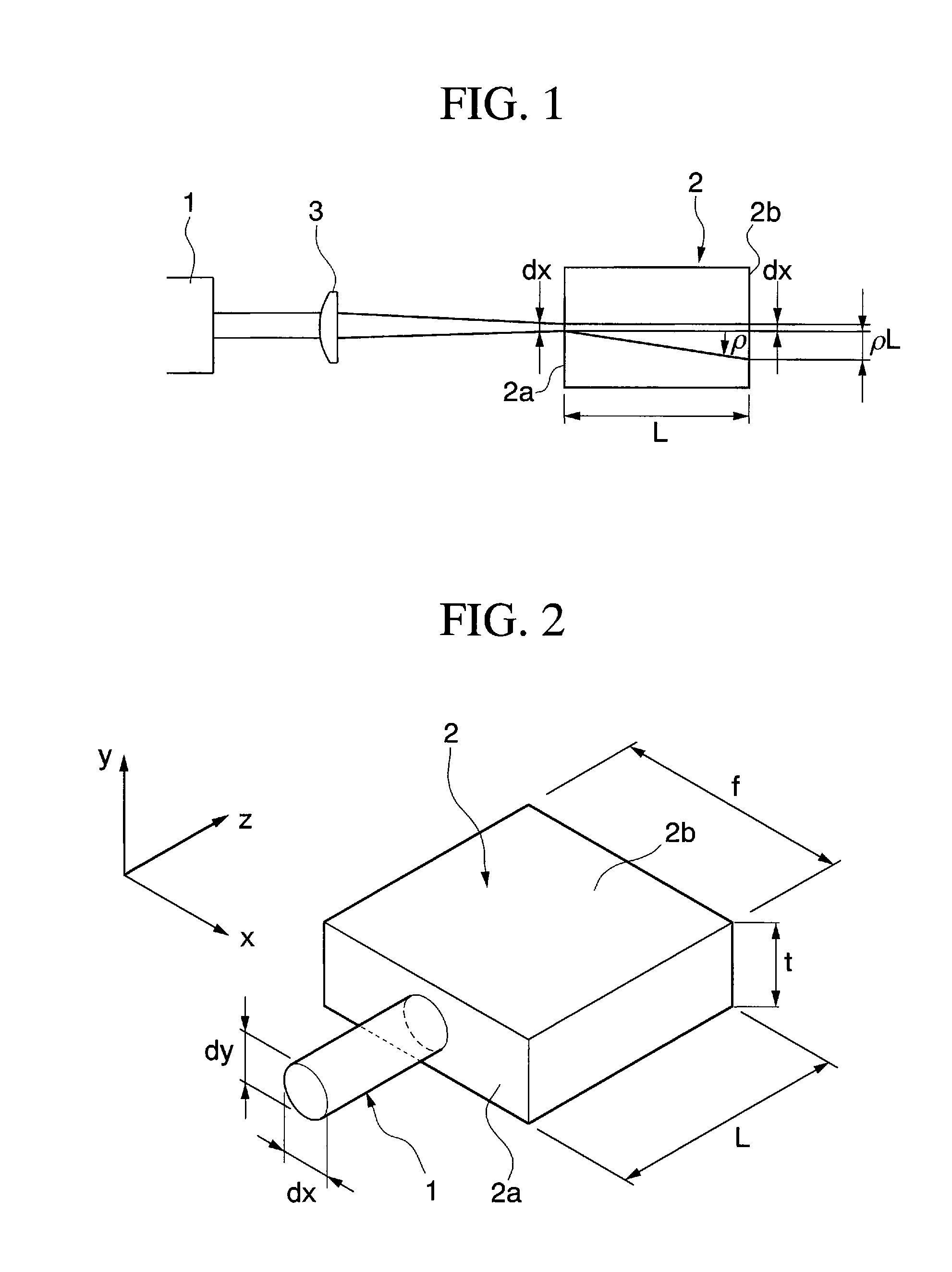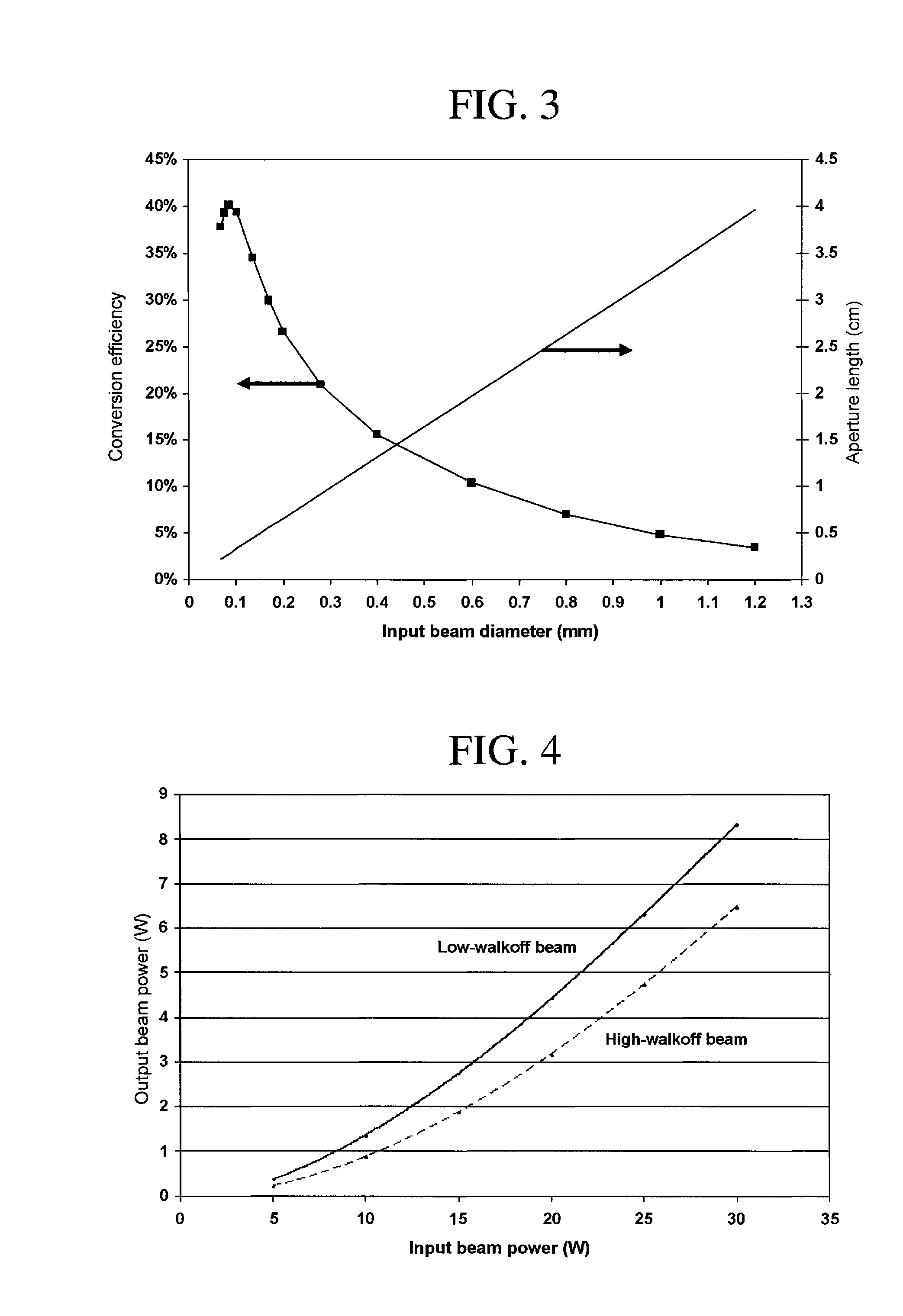Wavelength conversion method with improved conversion efficiency
a conversion efficiency and wavelength technology, applied in the field of wavelength conversion methods, can solve the problems of reducing the power in the output beam, reducing and changing the refraction with temperature, so as to improve the conversion efficiency of a nonlinear crystal and reduce the effect of absorption
- Summary
- Abstract
- Description
- Claims
- Application Information
AI Technical Summary
Benefits of technology
Problems solved by technology
Method used
Image
Examples
Embodiment Construction
[0026]The principle of the present invention is based on the discovery that, when there is significant absorption created by the output beam in a nonlinear crystal, a design that includes substantial walkoff of the output beam from the input beam or beams can be more efficient in nonlinear generation than a configuration where walkoff is minimal and the conversion efficiency is predicted to be equivalent or higher.
[0027]The effect of Poynting vector walkoff in birefringent crystals is well known. Consider two beams of linearly polarized light that initially are launched into the crystal in the same direction, with one beam of light polarized parallel to one of the principal axes in the crystal, the other with light polarized at some arbitrary angle to the principal axes. Because of birefringence, the direction of power flow (that of the Poynting vector) is different from the initial direction of light for the beam polarized at the arbitrary angle. For light polarized parallel to a p...
PUM
| Property | Measurement | Unit |
|---|---|---|
| wavelength | aaaaa | aaaaa |
| aperture length | aaaaa | aaaaa |
| aperture length | aaaaa | aaaaa |
Abstract
Description
Claims
Application Information
 Login to View More
Login to View More - R&D
- Intellectual Property
- Life Sciences
- Materials
- Tech Scout
- Unparalleled Data Quality
- Higher Quality Content
- 60% Fewer Hallucinations
Browse by: Latest US Patents, China's latest patents, Technical Efficacy Thesaurus, Application Domain, Technology Topic, Popular Technical Reports.
© 2025 PatSnap. All rights reserved.Legal|Privacy policy|Modern Slavery Act Transparency Statement|Sitemap|About US| Contact US: help@patsnap.com



